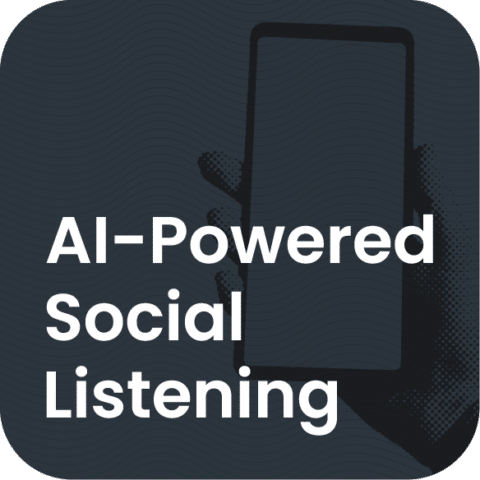As said by Ted Coine: ‘Influence will lead marketing efforts by 2020. It’s the most effective form of advertising, and coupled with a solid content strategy, no TV or Facebook ad can even compare.’
Influence is surely taking the lead today in the B2B space through influencer marketing.
Every day, consumers and corporate decision-makers are becoming more intelligent than ever. It is becoming difficult for businesses to convince them to use their products or services. They can only be attracted by a smart marketing technique, i.e., influencer marketing.
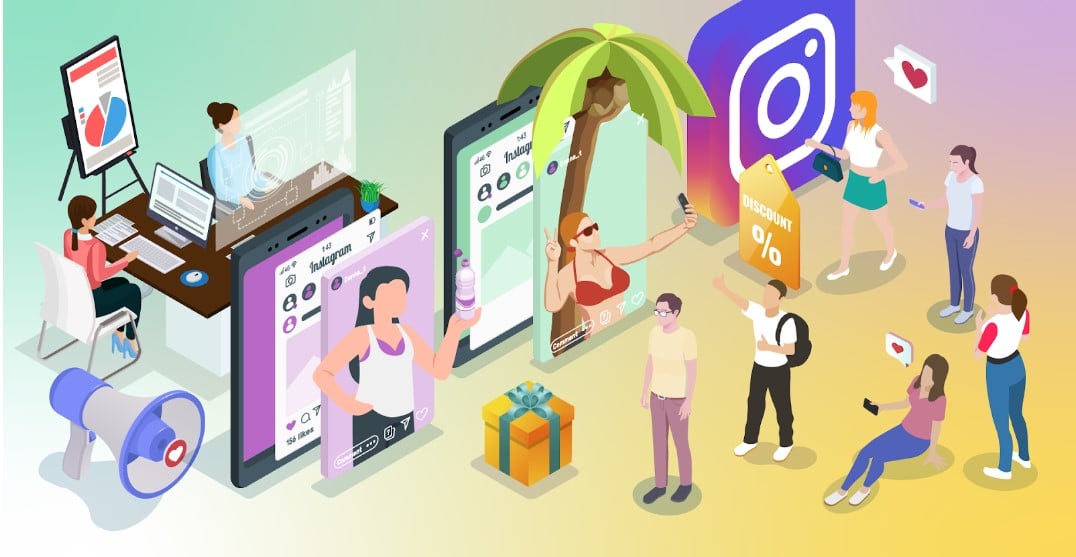
But why is all the focus on influencer marketing? Gone are the days when people quickly fell for generic digital ads and common marketing tactics. It is not surprising that 1 in 4 consumers purchase based on recommendations from social media influencers. This shift in trust explains the power of influencer marketing and why it is not just popular but incredibly effective.
This article will explore what B2B influencer marketing is, and the latest innovations in influencer marketing for B2B brands.
B2B influencer marketing defined
B2B influencer marketing refers to businesses collaborating with influencers within their industry to promote their products or services. Unlike B2C influencer marketing, which often targets consumers, B2B influencer marketing focuses on engaging and influencing other businesses.
In a B2B setting, influencers could be industry experts, business leaders, consultants, or professionals with a substantial online presence. The goal is to leverage the trust and authority these influencers have built within their niche to enhance the credibility and visibility of a B2B brand.

Why is influencer marketing important for B2B brands?
People usually trust recommendations from their friends, which also holds true in the B2B world. Most B2B influencer marketing uses social media and content marketing. This is because creating engaging content is crucial in today’s marketing world, especially when connecting with the audience you want to target.
82 percent of B2B marketers also believe that the quality of customers from influencer marketing is better than other marketing types.
When employees become brand ambassadors and share positive content about their workplace, products, or services with their networks, it promotes the authenticity of the brand. This employee advocacy also plays a great role in building a brand’s positive image and might drive sales in the future.
For a successful B2B influencer marketing campaign, those leading it need to approach it like B2C marketers. However, it’s important to find clever ways to target people with deep industry knowledge.
If you’re a business wanting to connect with your crowd, teaming up with the right influencer is the best way to create excellent content and shout out your products.
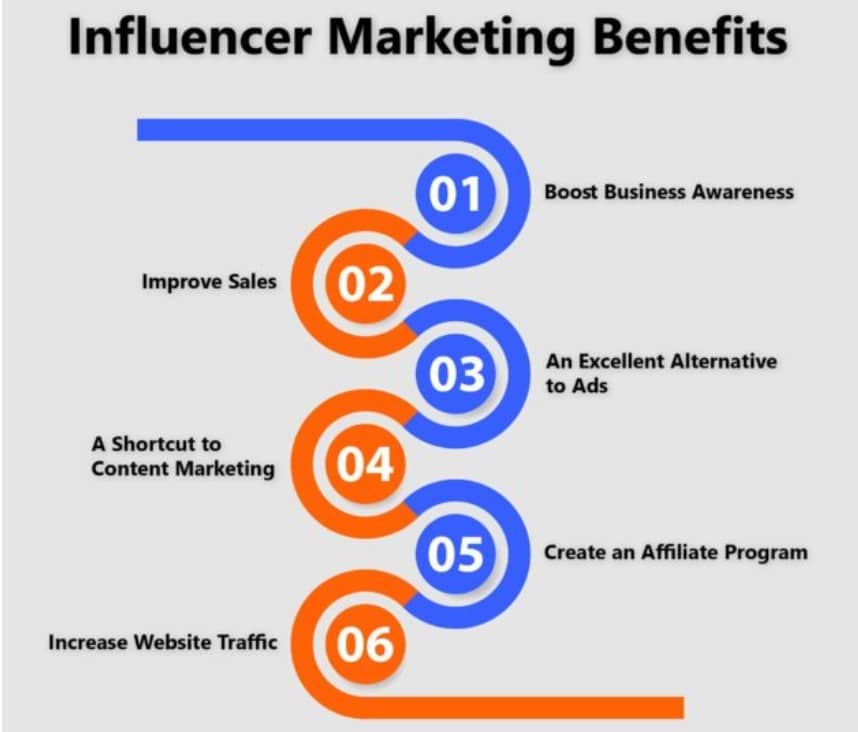
Here’s how influencer marketing will benefit your business:
More people know and trust you
B2B influencer marketing helps your brand get noticed and trusted by teaming up with big names in your industry. When these influencers give your products a thumbs-up, their followers are more likely to trust your brand.
Targeting the right people
Influencers have followers who share common interests, demographics, and preferences. By collaborating with influencers whose audience aligns with your brand’s target market, the message is more likely to resonate with the right people.
This ensures that promotional efforts are directed toward individuals who are more likely to be interested in and engaged with your brand.
More sales and interested customers
With influencer marketing, you can get more people to check out your website and buy your stuff. The influencers help bring in new customers and boost how much money you’re making with cool and relevant content.
How to create effective B2B influencer marketing campaigns
Creating and managing influencer marketing is not a one-day job. It requires rigorous hard work, smartness, and patience; and you can kill it with the right strategies. Here are some strategies to create effective B2B influencer marketing campaigns.
Step 1: Define your objectives
Start by setting clear goals for your B2B influencer marketing campaign. It can be boosting brand awareness, generating leads, or establishing trust in your industry. Know that your goals will shape your campaign strategy. Take the time to carefully plan your roadmap, as this initial step is crucial for the entire process.
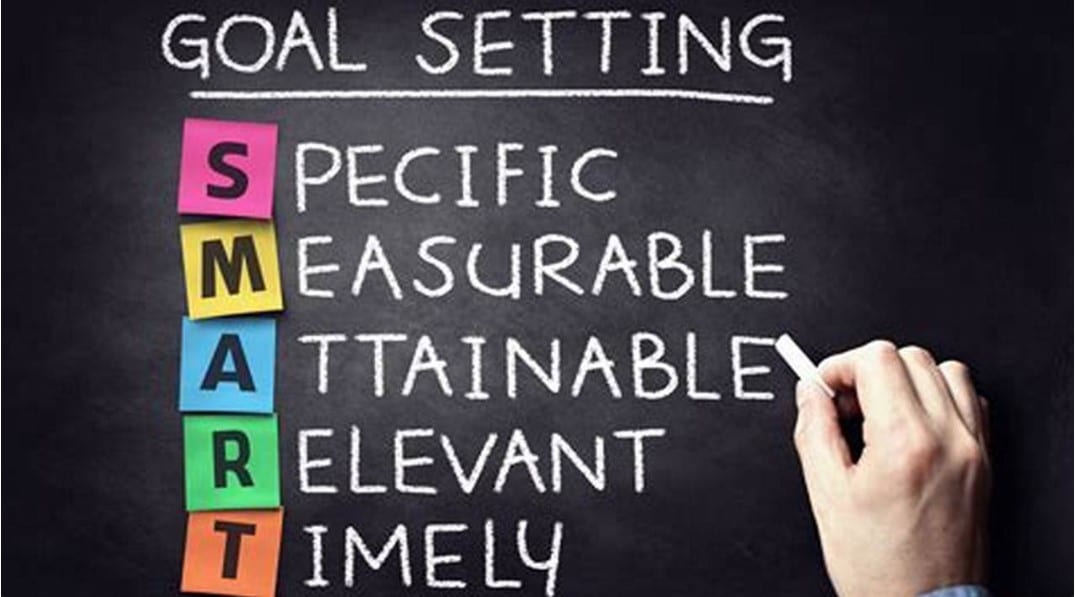
Step 2: Choose your platforms
Now that your goals are in place, decide where to focus your efforts. LinkedIn is excellent for reaching a professional audience. However, social media platforms like TikTok, Instagram Reels, and YouTube Shorts offer opportunities to engage with industry experts and create compelling content. Diversify your platform selection based on the creators you plan to collaborate with.
Step 3: Influencer collaboration
Begin by discovering individuals with a substantial following and influence in your target market. Look for those actively involved in your industry with a significant following and a genuine passion for what they do. You can either go for macro-influencers with a large audience and broader reach or micro-influencers specializing in a specific niche with a smaller following.
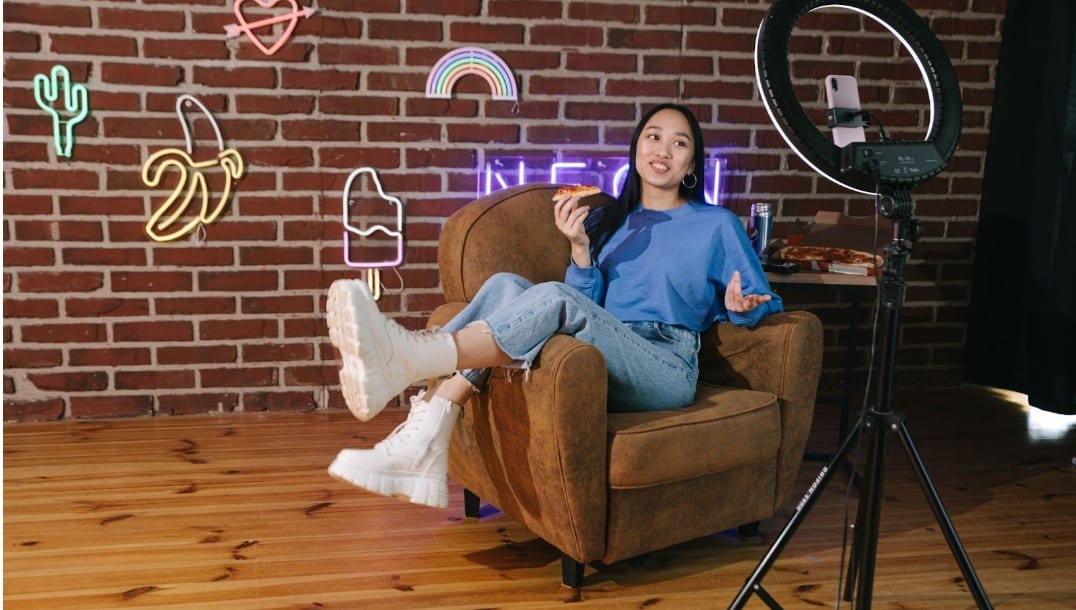
Once you’ve spotted potential macro and micro-influencers, contact them and start building a relationship. Take the time to get to know them, engage in activities like commenting on their posts, and share their content. Remember, genuine connections lay the foundation for a successful collaboration.
Step 4: Create campaign briefs
Once a creator agrees to collaborate, develop a campaign brief outlining success metrics. Define specific objectives and goals for your campaign. Communicate parameters and encourage creativity among influencers clearly. This involves outlining what you want them to promote, the type of content they should create, and the most effective methods for sharing it.
If these tasks sound complicated, you can rely on the best Asana alternatives to smoothly manage your dashboard.
Also, allow room for their creative input. Take feedback as an opportunity to collaborate and align messaging. Ensure the content aligns with your brand while letting creators express themselves authentically.
Step 5: Monitor content and performance
In influencer marketing, there’s no “set and forget” strategy. Track all creator-generated content to assess its effectiveness by monitoring key performance indicators (KPIs). Keep a close eye on engagement metrics such as likes, comments, shares, and the overall engagement rate. Measure the reach and impressions to understand the content’s visibility and evaluate conversion metrics like click-through rate (CTR) and conversion rate to assess the impact on desired actions.
Always, keep creators informed about the performance of their content. If certain aspects aren’t delivering the expected results, collaborate with creators to refine strategies.
Step 6: Optimize along the way
Learn from successful approaches and optimize your strategies accordingly. For instance, if content from creators with C-suite titles resonates well, consider building a team of executive creators. Pay attention to content gaps and, if necessary, collaborate with creators specializing in educational content.
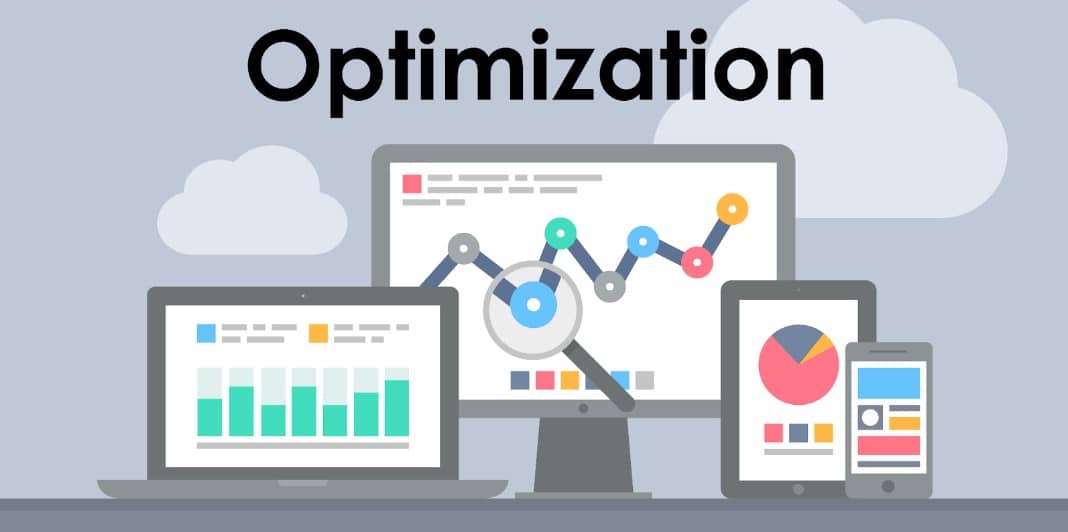
Step 7: Report and repeat
Maintain detailed reports of your influencer marketing program to demonstrate its impact. Use the data to tweak and enhance your approach from time to time. Analyze results, repeat successful strategies, and keep your executive team informed to secure ongoing support for your program.
Examples of successful B2B influencer marketing campaigns
Brands are increasingly recognizing the potential of partnering with niche industry influencers and thought leaders to increase their reach, build credibility, and grow meaningful connections with their target audience.
Below are two instances where strategic alliances between businesses and influencers have not only elevated brand visibility but also enriched the narrative within diverse sectors.
Example 1: VideoFruit + OkDork
A classic yet powerful move in B2B influencer marketing is guest blogging. Imagine inviting industry influencers to share their insights on your platform. Bryan Harris, the founder of VideoFruit, did just that by writing an article for the OkDork blog. It is a niche digital marketing publication with a solid B2B following.
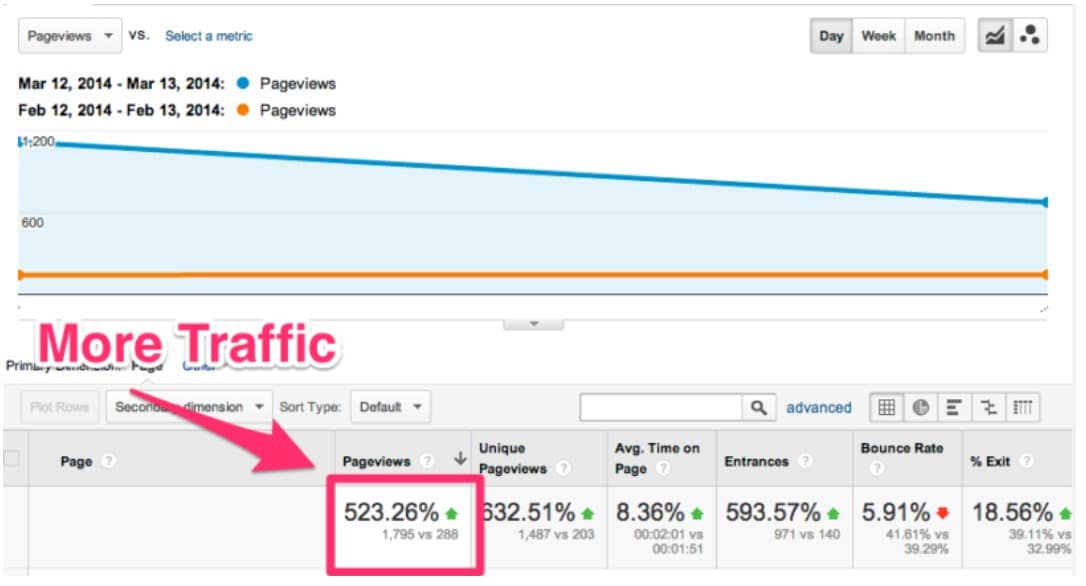
The results were fantastic! On the day the post went live, VideoFruit’s page views shot up by 500 percent. Plus, unique page views skyrocketed by a whopping 600 percent. The average visitor time increased by over 8 percent, and the bounce rate dropped by around 6 percent. They let their internal talent connect with a targeted B2B audience. Thus, VideoFruit not only boosted conversions but also significantly raised their brand awareness.
Example 2: IBP Employee Advocacy
IBM implemented a continuous influencer marketing strategy that taps into its workforce. Instead of searching externally for influencers, IBM recognized the diverse nature of the industries it serves, making it challenging to find the perfect external match.
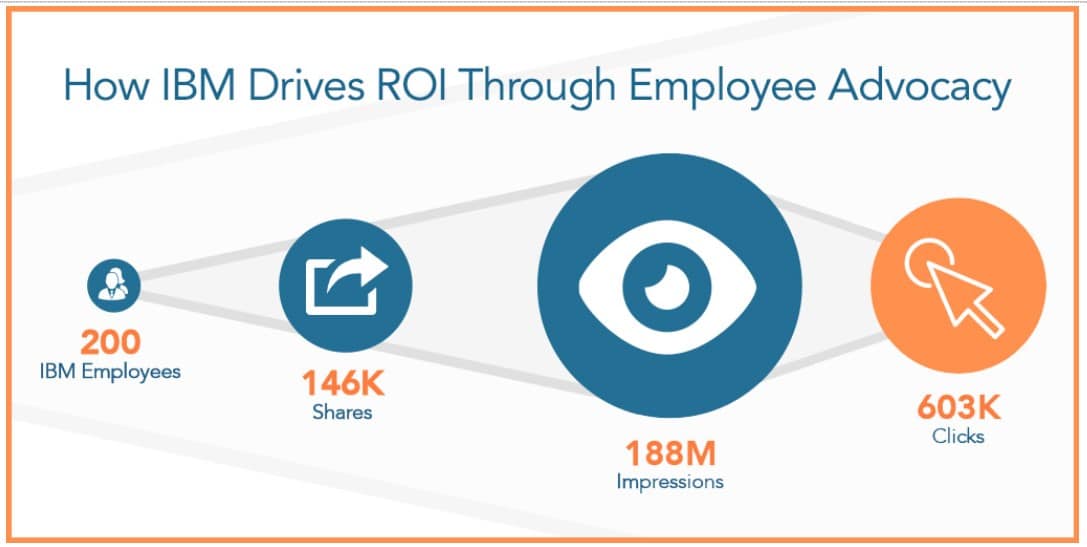
The company encouraged its employees to tweet about their products on social media to attract customers. This innovative internal influencer strategy not only utilizes the authentic expertise of IBM’s workforce but also aligns with the company’s commitment to leveraging internal knowledge for external impact.
Conclusion
Integrating B2B influencer marketing signifies a departure from one-size-fits-all communication strategies to a more targeted, relationship-driven approach. Public relations professionals can leverage these insights to tailor their campaigns, focusing on building authentic connections with influencers who can elevate brand narratives within specific professional ecosystems.
By recognizing the unique dynamics of B2B influencer engagement, PR practitioners can not only enhance their brand visibility but also foster a culture of trust and authenticity in an increasingly interconnected digital world.



